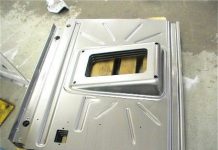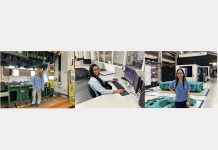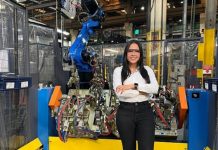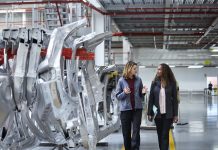Applying Simulation to the Unified Forming of a Hollow & Arch-shaped Side Frame
With more articles coming out of Japan this blog post brings a case study to the English speaking world for the first time.
Chiyoda Kogyo Co. Ltd is a specialist in the creation of press-forming tools, mainly for car seat-related parts. Their strength is the use of ultra-high tensile materials with yield strengths of up to 980MPa. Toyota is their main customer and this particular project lead to Toyota selecting Chiyoda Kogyo as the ‘New Technology Award’ winner in 2014.
Behind the scene, AutoForm’s software made a contribution to this development, resulting in a 15% weight reduction for a rear-seat side-frame in a minivan.
Here is the inside story:
When 980MPa Materials Hit the Scene
President, Mr. Kazuaki Hayase stated ‘The first challenge in the late 1990’s was to form 980MPa-graded materials, which at that time there was no instance in which a tool had been created for such high strength materials.’
‘We started from scratch, even with an insufficient budget. Then in 2005 we introduced AutoForm and the laser measurement device, undertaking to first create tools by experimentation, comparing reference values of the simulation and the actual values of the experiment. We then streamlined similar geometries from the results, by registering new technology into the database.’
Contrary to most doom and gloom stories of the 2008 financial crisis, Chiyoda Kogyo boomed thanks to their expertise in forming parts with high tensile materials.
Their strategy is different. Instead of merely working with the request of customers – they also actively suggest new automotive parts, based on their know-how for tool design with the 980MPa materials. With such advancement ‘AutoForm is indispensable for our business’ says Mr. Hayase.
Reducing the Number of Parts
The Road Traffic Act in Japan was amended making new safety measures mandatory. Chiyoda Kogyo joined forces with Toyota Boshoku in order to deal with this issue.
Here Chiyoda Kogyo proposed a new and unique method: unified forming with bending and welding, which creates a hollow and arch-shaped frame from a 980MPa sheet material.
The conventional side frame for the rear seat (left Fig. 1) consisted of two parts, created differently, arc-welded into a hollow frame. It is connected to the upper arm around a foot with bolts, nuts and bushings.

Fig. 1: The unified forming of the hollow
and arch-shaped side frame
However, the newly developed side frame, (right Fig. 1) consists of a sheet whereby the high-tensile material is bent into square, forming a hollow structure, and further into an arch-shape. The left over material, resulting from stretching and compression, is converted to the groove-like bead.
It is this procedure that enabled the unified forming. The laser-welding technology, avoids distortion caused by excessive heat, and is used for the connection of the side frame, in order to ensure the highest possible strength of the welded areas.
Then the side frame is connected to the upper arm using arc-welding, which successfully reduced a number of parts from 9 to 2. (i.e. a 78% reduction).
The success depended on research, which took ten months of examining the technique of unified forming. Design drawings were issued by Toyota, and repeated simulations were performed using AutoForm. Chiyoda sent the resulting technique for tool design to Toyota and remains in use for Toyota’s ‘Noah’ and ‘Voxy’ minivans and will soon be in use for several other models.
Now with the reduction of the number of parts, the weight was in turn reduced by 15%. Thus recognition was received from Toyota, securing the ‘New Technology Award’ in 2014 for Chiyoda Kogyo.
Cutting 4 Months with Simulation
Behind this success AutoForm was used to run simulations.
The first simulation was run with the procedure as shown in Fig.2. First, when the design drawing and specification for a new product is received, the database is browsed to check if there is any similar geometry, then the process and structure of the tool is examined. Now the feasibility including cracks and wrinkles is checked. If there is any possibility to influence the tool creation, a request for modification of geometry or trim lines is sent to the customer.

Fig. 2: The procedure for the
simulation analysis in general
Next, the springback is verified based on the design drawing to review the tool design. Such springback simulations are run from 5 to 10 times, and are repeated accordingly, after the modification is received. When the tolerance is within ±0.5mm, the team moves onto the actual tool creation.
The actual tool is created from the CAD design, which is measured using the laser measurement device. After making sure the difference between the actual values from the measurement and the values from the master data is within the desired tolerances, the tool is moved to line tryout.
Mr. Shinichi Mizobata, the Chief of NCP at the engineering department stated ‘Before introducing AutoForm, it took 13 times in the field until was all done. Now, with AutoForm, the number is reduced to 7 times. Besides, the time period from receiving new product request to tryout is reduced to 4 months on average.”
Read our previously translated Japanese success story here:
85% Accuracy Rate Realized During First Tryouts with AutoForm Customer: Fabest Corporation













